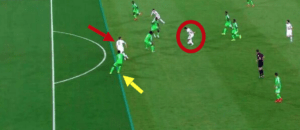How does the offside rule work in football?
 For anyone who is new to the sport of football, by far and away one of the most confusing rules is the offside rule. Offside is an important part of defending in football, allowing you to force the opposition to give a foul to your team simply by running beyond your last defender. So, how does the actual rule work? In this guide, we’ll try and break down what the offside rule actually means.
For anyone who is new to the sport of football, by far and away one of the most confusing rules is the offside rule. Offside is an important part of defending in football, allowing you to force the opposition to give a foul to your team simply by running beyond your last defender. So, how does the actual rule work? In this guide, we’ll try and break down what the offside rule actually means.
So, typically the offside rule will be built around making sure that the team who is attacking cannot be beyond the last player in the opposition team. This means that you can’t simply stand behind the opposition defence, or ‘goaltend’. But what about the keeper?
Typically, the rule is that you will be judged on whether you are offside or not based on outfield player positions as they are 99% of the time in front of the goalkeeper. So, this is why the rule is written as the ‘second last opponent’ – you cannot be ahead of the goalkeeper regardless.
To be regarded as offside, any part of your head, body, or feet would need to be beyond the last opposition player. Hands and arms do not count as you cannot score with your hands or your arms. If you are level with the second-last opponent or the last two opponents, then you are considered onside.
However, it’s important to note three things here:
- You can only be ruled from offside in the opposition half; if the entire opposition team is in your half, then so long as you in your own half then you cannot be considered offside.
- It is not an offence to stand in an offside position. You can stand offside so long as you don’t get actively involved in the play.
- You can be in an offside position; so long as you don’t touch the ball or actively get in the way of an opponent, you will not be flagged for being offside.
Offside can be a very confusing rule, but so long as you remember that it comes down to the last opposition outfield player as opposed to the goalkeeper it should be easier to stay onside.
